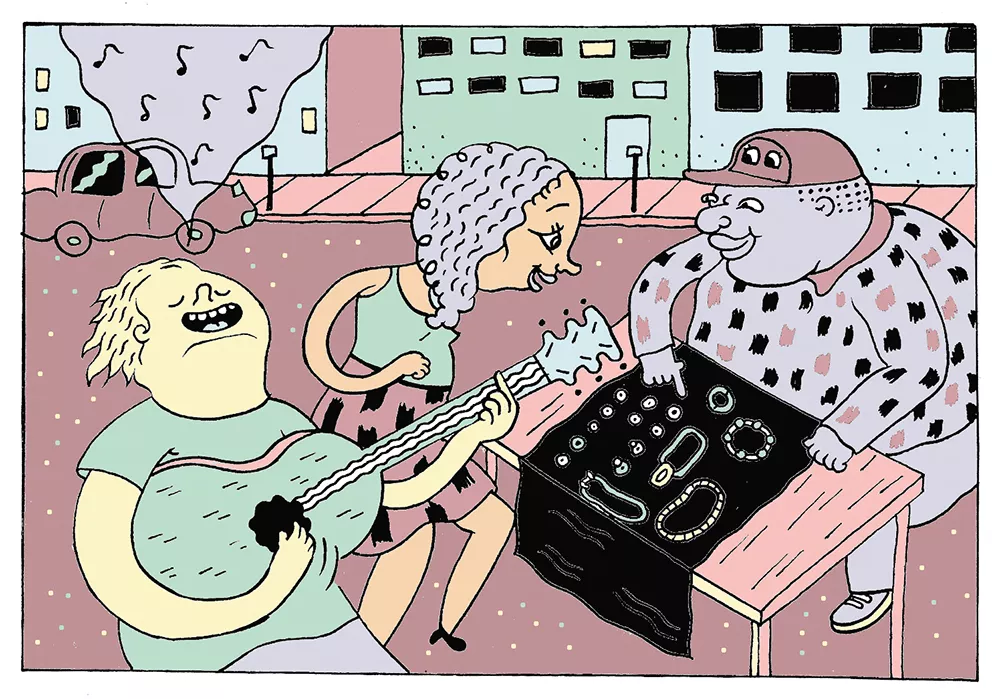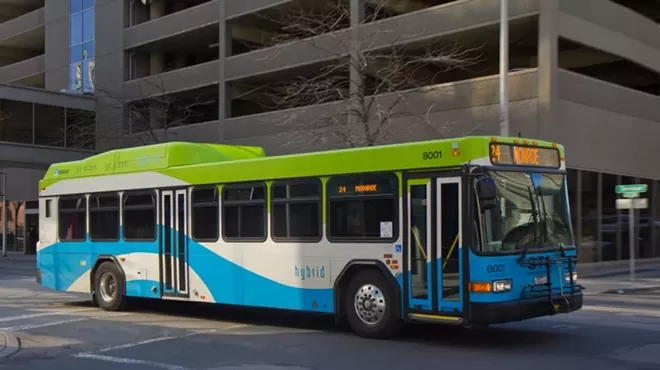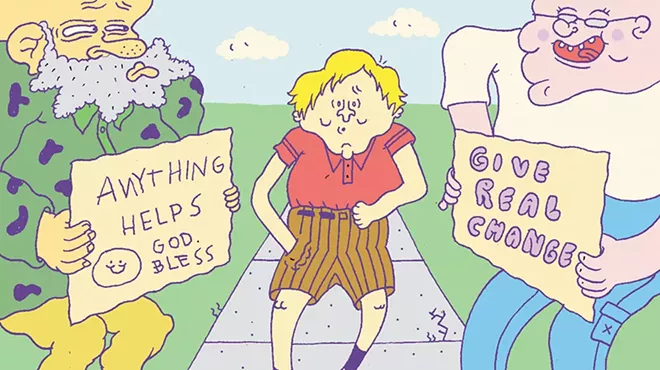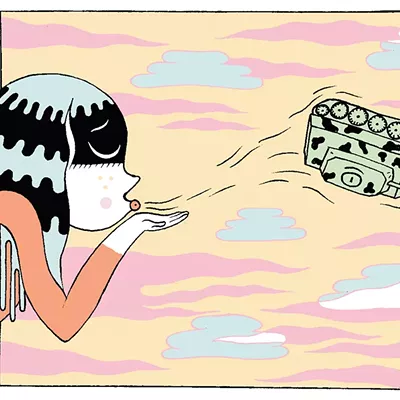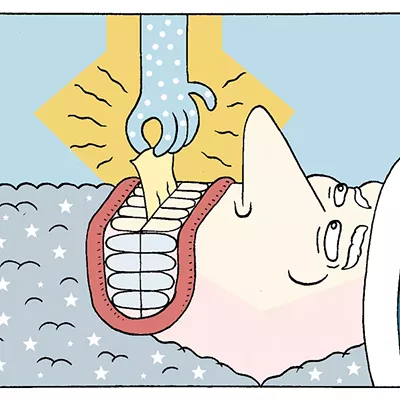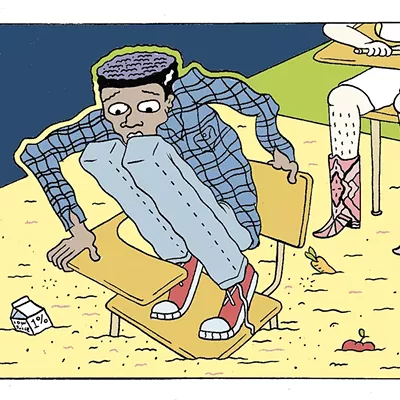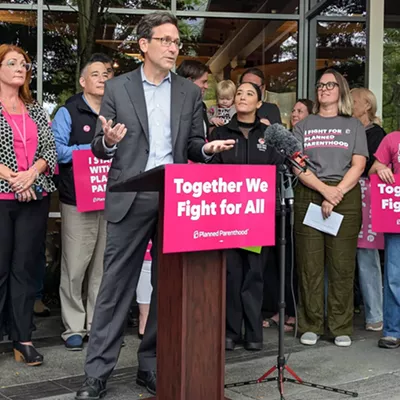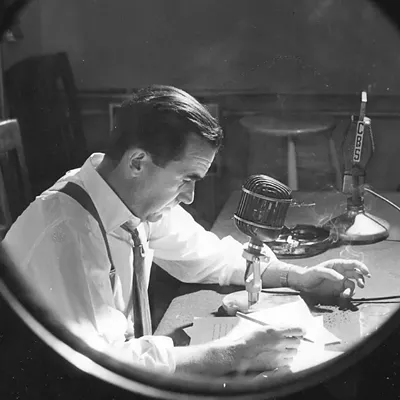When faced with a problem, there’s a natural impulse to look for the simplest solution. It makes a certain sense: The most direct path is probably the best, right?
For example: You got riffraff in your bus plaza? Son, you better run them riffraff off! It makes sense.
But if they’re still around after a decade or two of trying to scatter them, then what? By golly, we might want to move that whole darn plaza! Well, OK, but that’s a much less simple solution.
And look over there, there’s riffraff on our streets! Asking for money! Where the tourists can see! We gotta nip this riffraff thing in the bud! Or do we?
What if we didn’t?
Let’s leave the vagrants and the loiterers and the street kids alone for a second. Let’s stop fixating on what we don’t want downtown and take some time to think about what we do want. So what do we want?
Better retail opportunities, maybe. Better sidewalks. A better park at the center of our city. Better parking and more density, certainly.
My own wish would be for a set of designated public squares with simple, inexpensive infrastructure that people could use, on a whim, to plug in their phone or a guitar amp or a light for their jewelry stand, and just have a picnic or a jam session or a pop-up shop. I dream of a more spontaneous and lively downtown altogether. The sort of place people might just — I don’t know — walk around in. No destination necessary, just an urge to discover.
As for where such squares might go, I think we could do a lot worse than those same places we spend so much time wringing our hands over. The entrances to our city. Wall Street between the STA Plaza and park. The Plaza itself.
The reasoning is simple: We can either keep trying (and failing) to sweep every last corner clean of “undesirable” things, or we can flood those corners with light (and power), and invite everyone to come play.
We’ve seen this work a couple of times just recently:
When Huntington Park opened up earlier this summer, the surprise and delight of the place lifted people onto their tiptoes. I have future in-laws thinking about moving back to Spokane because of that damn park. It’s amazing. Same with the new part of the Centennial Trail that passes under the Monroe Street Bridge. Safety concerns aside, it’s a magical new view on our city that became a destination despite little fanfare.
Both of those locations used to be hangouts for street kids and other homeless people. And you know what? They still are. They’re just hangouts for everyone else now, too.
The vagrants aren’t stopping anyone from walking those paths, viewing that art and experiencing those falls. Nor do the homeless become invisible in the face of all that beauty; they just aren’t the only thing you see. If you were to take the time to look, though, I bet you’d find the same wonder written on their faces that’s written on yours.
Those were both big, expensive projects, though. What if there were a cheaper way?
Let’s go back to that idea of public squares. What if we begin on Wall and maybe at the Plaza, then identify three to five more places downtown where, far from discouraging loitering, we built an inexpensive infrastructure that encouraged it?
What if we put a farmers market over the falls on the Post Street Bridge, a little stage where the fountain used to be in the Parkade, and bistro lights down the creepy alley that connects Howard by Atticus and Mizuna to Wall by Runner’s Soul? (These are all ideas I’ve heard kicked around.)
What if we took the areas where we feel uncomfortable and did the opposite of restricting people’s access? What if we tried to get everyone to come? Connecting Kendall Yards to Huntington Park to River Park Square to the Plaza — that promising, troubling Plaza, which acts as a beating heart, pumping people from the core of our city to its extremities and back.
How would such a scene look to the people we’re trying to attract from out of town? Like a teeming, scary mass of humanity, or like a vibrant, inviting city core in one of the most beautiful city settings in America?
How would that scene look to you? If we built those sorts of spaces, and invited everyone to come, would you loiter there?
Personally, I can’t wait to. ♦
Luke Baumgarten, a creative strategist at Seven2 and former culture editor of the Inlander, is a co-founder of Terrain and the founder of Fellow Coworking. EDITOR’S NOTE: A similar, slightly shorter version of this column first appeared in the Aug. 7 issue.

